Can you believe that it’s been 25 years since Terry Gilliam’s Twelve Monkeys was released? Twenty-five years since Bruce Willis was sent back in time to help discover a way to prevent a deadly virus. It’s pretty hard to attempt any rewatches of it right now, given that we are basically living in our own version of the part of the film between when the virus hits and when Willis’ James Cole makes his time-hopping attempt to stop it. However, that doesn’t mean one can’t appreciate the unique perspective given in Twelve Monkeys.
Ask around, and a lot of people will remember the film mainly for its visual style (as they would Chris Marker’s La Jetee, on which this film is partly based). Gilliam has been known to attack viewers through their sense of sight. Gilliam films like Brazil or Fear and Loathing in Las Vegas, even Time Bandits, all showcase his way of emphasizing visuals as an important storytelling tool.
For the most part, Twelve Monkeys manages to keep things grounded. Cole’s post-apocalyptic world is full of steampunk and computers on the inside, but outside, everything has gone back to nature. Animals roam freely, buildings have trees growing out of them, and grass springs from what were formerly roads.
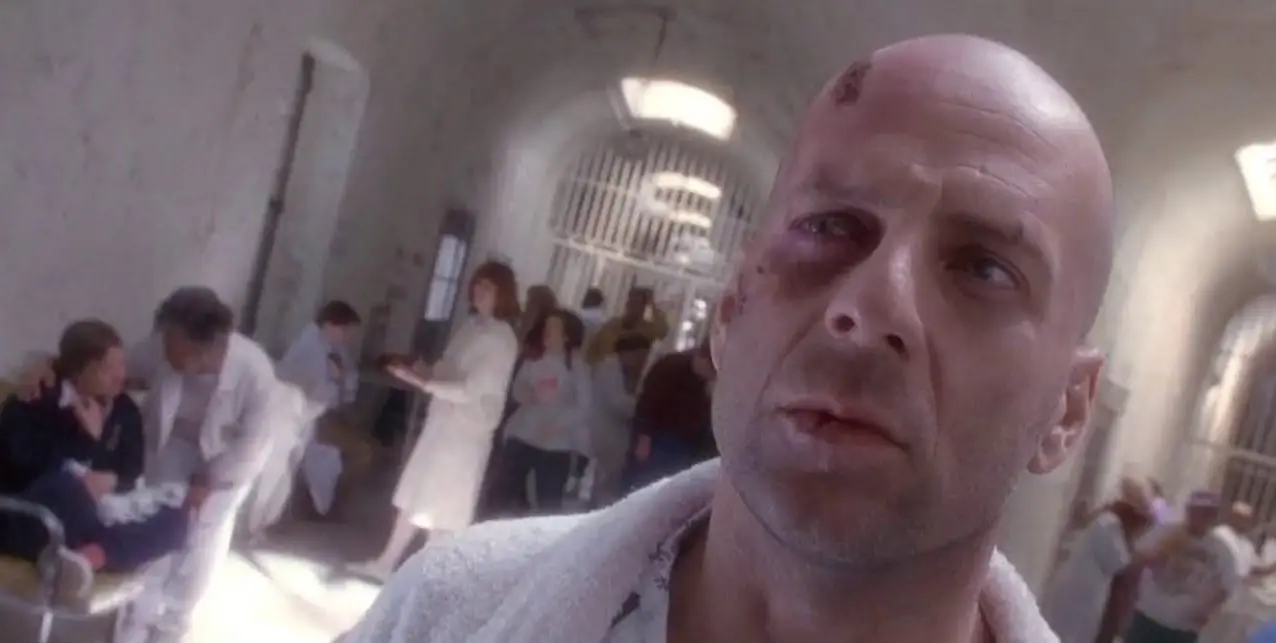
Gilliam makes great use of his unique visual style when Cole is sent back. Everything he has known vanishes, and suddenly we find ourselves being thrown headlong into scenes such as his first meeting with Jeffrey Goines (Brad Pitt) in a psychiatric institution. Everything is shot on a tilt, which allows us to feel just as uncomfortable and confused as Cole must be. The use of angled shots like these continues throughout the film in moments of confusion. Another example is when Doctor Kathyrn Railly (Madeleine Stowe) gets word that a bullet pulled from Cole (after he arrives in 1996) was actually from the 1920s, reaffirming his story about being from another time.
Another thing that one can appreciate from this film after 25 years is its use of space in a shot. Cole as a character is someone who is very observant, and Gilliam makes sure to place important things in his wide shots to keep us on the lookout, too. When Cole is in the community space of the asylum, it appears as what almost feels like a fishbowl. The many arches of the different entryways all appear in the same frame, making the viewer uncomfortable, trapped in a neverending room with him.
When the streets of the city are shown, Gilliam showcases how much society advertises. The walls are covered in posters, some layered on top of previous posters. It shows that time continues, and new things come out. At the start of the film, we are shown everything left in a standstill and collecting dust. It’s as though Gilliam is trying to make us as observant as Cole so that we are able to follow his story and connect to it more.
Technical aspects aside, this film wouldn’t be as memorable as it is without its cast of characters. James Cole is really the last person one would expect to send back in time. As one of the astrophysicists even says, “We want people that are strong…mentally. We’ve had some misfortunes with unstable types.” Cole is the very definition of “unstable.” We are introduced to him while he is in the middle of serving a sentence in prison for violent behavior. They may rave about his observation skills, but when it comes to keeping cool, he’s very much the opposite. Railly first meets him after he is arrested in 1990. She’s told he took down two police officers and was given enough tranquilizers to kill a horse, all the while raving about viruses and not knowing what day it is. He’s not really a person you can trust to keep a low profile.
As the film progresses, he walks the line of sanity and insanity. When Cole is in 2035, he is alert and “normal.” He’s able to hold conversations without being incoherent. That changes when he’s in 1990 and ‘96. Both the way he presents himself and the way he speaks become more like someone who is mentally disabled. He’s alert in a way that constantly puts him in a state of high anxiety with the potential to burst at any moment. The change of his behavior between worlds begs the question: Could Cole have created the entire scenario of a deadly virus, and his trip back through time to stop it, in order to mask how mentally unstable he is (and may have been for a long time)? He does have memories of witnessing someone dying in an airport as a child, which is some deep-rooted trauma right there.

There are many moments in the film that suggest that this is exactly what it could be. When Cole finds himself back in his cell after “returning” from 1990, a voice speaks to him. The owner of the voice isn’t identified but suggests that it could be from the next block over or “in his head.” Later, Cole attacks a homeless man in 1996 because Cole thinks he recognizes the man’s voice as the one from 1990. Kathryn later also attempts to talk to this homeless man because she had seen Cole talking to him, but the man has no idea what she is talking about or who Cole is. In addition, Cole’s cell in 2035 resembles the isolation room he’s placed into after trying to escape the asylum in 1990. Could this be Gilliam’s way of giving us hints to Cole’s actual sanity, or making us question our own?
If we attempt to look at Cole as someone who tries to improve his mental state throughout the film, then we can easily look at Jeffrey Goines as someone who embraces his insanity. He meets Cole in the asylum and begins to talk to him about the concept of “germs.” To Goines, only a crazy person can think that little molecules exist that could cause harm, and only a crazy person could come up with the concept of washing your hands to prevent it. I guess that makes us all crazy for also believing in it.
He’s considered to be the villain of the film, and maybe that’s because Goines is the anti-Cole, but really the only villain in this film is Cole’s own mind. Well, he and Dr. Peters (David Morse), who was actually responsible for releasing the virus.
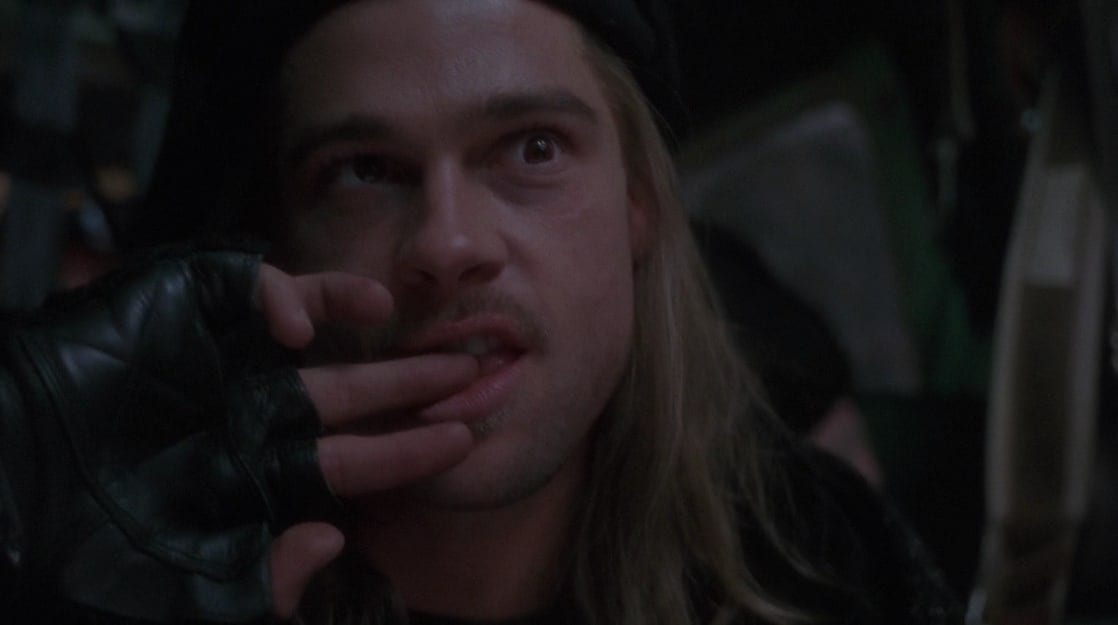
Goines is able to twist people’s ideas and in doing so has embraced his own conspiracy theories—theories like, “They are protecting the people on the outside from us when the people on the outside are as crazy as us.”
Years after his time in the asylum, Goines becomes an ecoterrorist with his band of misfits, The Army of the Twelve Monkeys, as they try to “educate the public” that this is an animals’ world. Humans and animals shouldn’t coexist because we’ve basically ruined what we’ve been given. It’s a point that is still being argued 25 years later. Climate change, animals becoming extinct, and why people should become vegan or vegetarian are only a few examples. Goines just represents an extreme version of this battle because no one wants to take his mental instability seriously.
Goines rants to his crew about how his former psychiatrist Kathryn Railly (the same Kathryn that is helping Cole) knows about the Twelve Monkeys. He believes the asylum scanned his brain into a computer and she managed to get hold of the information years later. Instead of giving the look of “OK, this guy is completely nuts,” these educated people still decide to follow him into battle, and by battle I mean they release all the zoo animals on the public. What better way to protest than creating some havoc, right?
Rounding out the main cast between Cole’s attempts to understand what is going on with him and Goines’ complete embrace of insanity is psychiatrist Kathryn Railly. I will admit, my first viewing of Twelve Monkeys was purely for selfish Madeleine Stowe reasons. I felt like an awful film nerd for having not known this film previously and surprised that my own father never mentioned it to me. It was only after I had bought the DVD that he told me he owned the VHS the entire time (thanks, Dad). Watching Railly hold her own among the boys and completely stealing the plot from them was really empowering to witness.
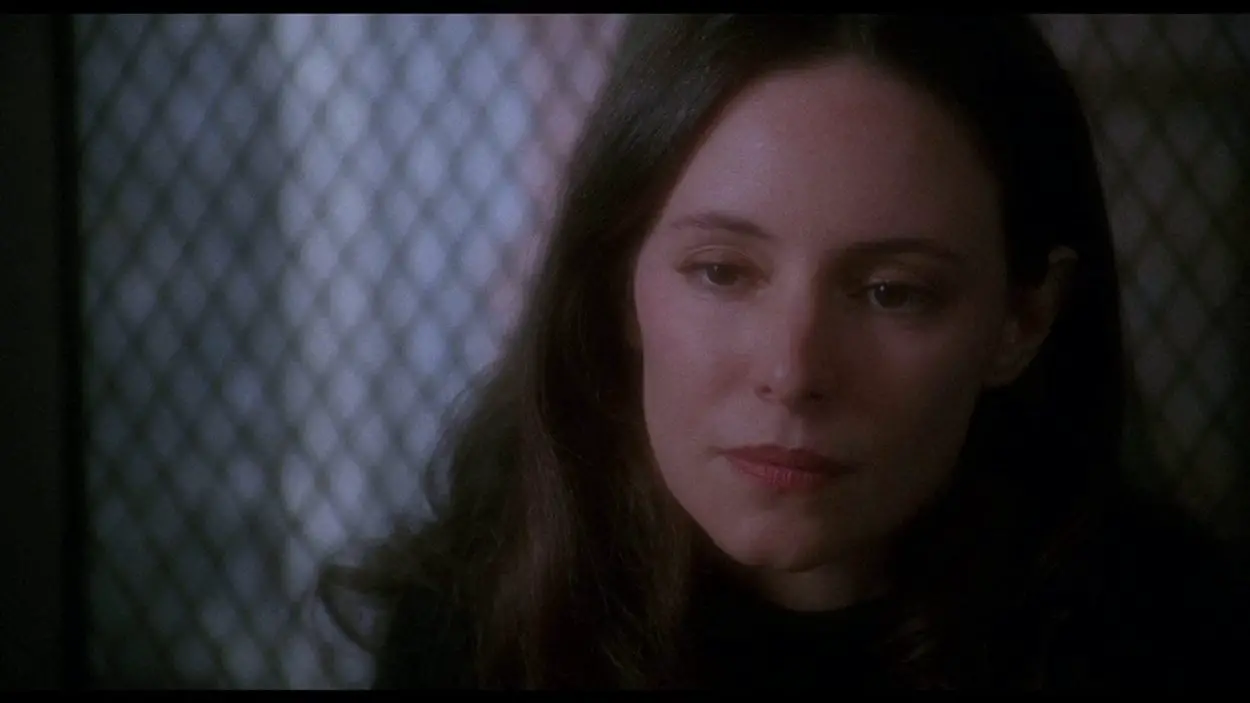
She is very confident in what she does, but as she attempts to help Cole realize that he’s not from the future, Kathryn begins to question herself. Early in the film, Cole makes a remark about a news report on Ricky Newman, a boy who has fallen down a well. “Never cry wolf,” he says. Later, it is revealed to Kathryn that Ricky had made up the entire situation. This causes her to begin to question everything else Cole has told her. As she digs and unearths more connections in the things Cole has said, Kathryn begins to become as paranoid as Cole himself.
When they reunite in front of the building hiding the Twelve Monkeys, Cole now seems to be the sane one, and she is drastically trying to understand what is going on. “I can’t believe that everything we say or do has already happened, or we can’t change what is going to happen, and if 5 billion people are going to die…” Her uncertainty soon causes her to be swept up in the moment and lose any clarity she has showcased throughout the rest of the film. This doubt leads her to decide to run away with Cole, which of course ends in his death at the end of the film.
Twelve Monkeys holds up 25 years later (Syfy even made a television series based on it) because it has the ability to make us question exactly what type of film we’re watching. Are we watching a science fiction film about time travel? Or could it be that it’s a dramatic and unique look into someone’s mental health, and how it begins to affect those around him? You can view this film multiple times and come out at the end with a different message. It’s all about what you decide to observe.

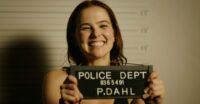
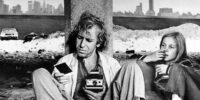

Could someone please explain how this film “The twelve monkeys” ended! In the last frame the female
scientist comes from the future,sits next to the villain and stops him from releasing the virus. But the
virus was already released by the boarding attendant when he opened one of the vials.
I loved this movie but in the words of “Peter Lorie” this picture is driving me “Sane”.
The tragedy and pathos of it all is the boy witnessing his own death and not realizing it.
I saw this movie 8 times and still don’t understand the ending but when they started playing “It’s a wonderful
world” at the end I lost it. To me it was one of the best science fiction pictures ever made.
Best regards.
Ken Judson